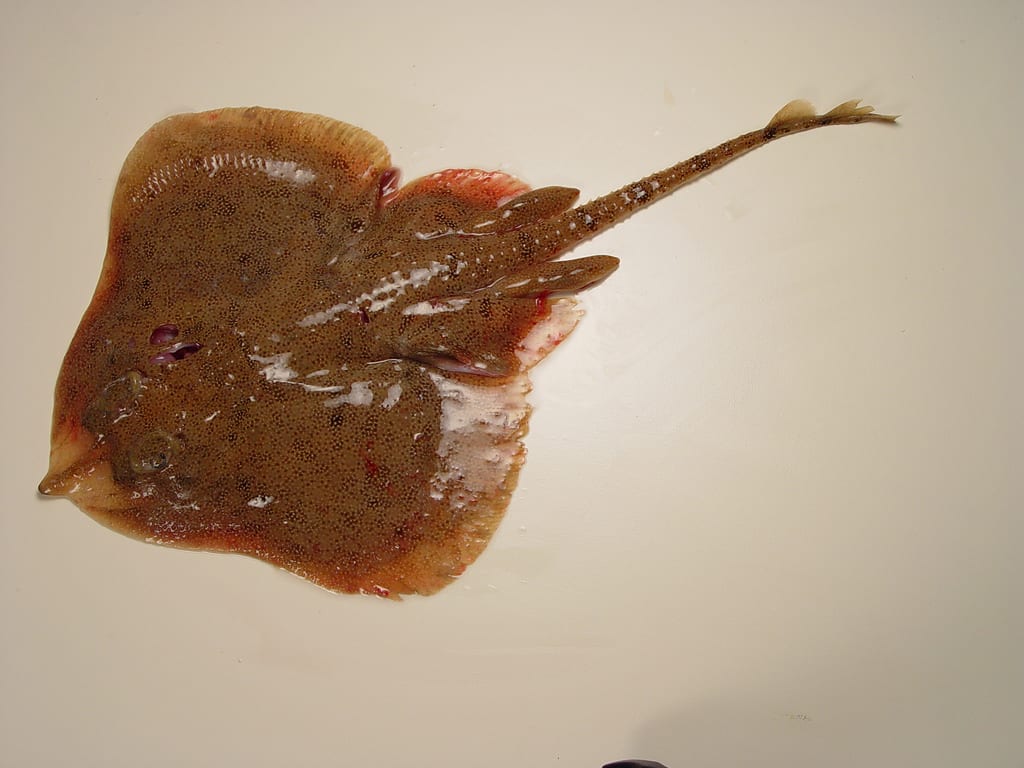“Imagine a world where butterflies run on batteries.†This is a quote from Terminator 2, when Skynet is just beginning to take over the world. Although it is unlikely that the world will end in complete robotic destruction anytime soon, a new innovation may be putting us one step closer to battery-ran butterflies: a live robotic stingray.
Last week, a paper came out in the journal Science regarding a new robotic stingray, powered by rat heart cells. These stingrays are tiny living robots that live up to one week.

Why choose to make a robotic stingray? Stingrays are part of the superorder of cartilaginous fish, Batoidea. The streamlined, flattened body of these fishes enables them to be highly energy efficient, and their bodies are nearly planar (flat), making them a simple model for robotics.
Ray fins move in two motions: bends and wave-like motions. The combination of these two types of motion enables the ray to move through the water without expending a high amount of energy. Inspired by nature, the researchers behind this innovation designed a robotic stingray with similar properties to living batoid fishes.
This tiny robot can fit in the palm of your hand and lives up to 6 days. This robot is composed of four layers: a 3D elastomer body, a golden skeleton (gold was chosen for its chemically neutral properties), a thin interstitial layer of elastomer, and finally, a layer of aligned rat heart muscle cells. To survive, all cells need an energy source. Mouse heart cells use glucose as their energy source, so the ray must swim through a sugar water solution to survive.
Wait, what? Isn't this a robot?
Yes, it is a robot, but this robot also happens to have a living component. In fact, these are no ordinary rat muscle cells. They have been genetically engineered, via optogenetics, to be light-sensitive. These rays can actually move and respond to outside light sources. A light source can be aimed at the top of the ray, and this will cause the mouse heart cells attached to the top layer to contract and pull the fins down.
The skeleton is designed so that when the heart cells relax, the fins automatically rise, eliminating the need for another layer of heart cells. The ray can continue in this motion for up to six days, and the scientists even sent them through an obstacle course, where they outperformed any other robot of their kind.
Robotic stingrays are another example of biomimicry. Similar to my previous robotic octopus post, robotic stingrays can be a stepping-stone towards artificial intelligence. You might be asking, what is the real-world application of a robotic stingray? Besides another cool toy to find at Brookstone, a robotic stingray can help advance the medical field.
Scientists and engineers are working on creating human organs that are part-living and part-robotic–for example, the researchers behind this stingray wanted to eventually create a robotic heart. We've come far with artificial hearts, but also what could happen in the future and how it could go horribly wrong–Terminator-esque! However, that sort of technology is not here yet; instead, we have cute, living robotic stingrays to play with.
 Holly McQueary is a PhD student in the Dept. of Genetics at the University of Georgia. When she's not buried under a pile of academic papers, she can be found in her kitchen baking a batch of chocolate chip cookies, crocheting awkwardly-shaped dishcloths, or dancing the night away with her BFFs. Solely based on diet, she is approximately 40% tacos and 60% caffeine. Holly can be reached at hmcqueary@uga.edu and you can follower her on Twitter @HollyMcQueary. Holly McQueary is a PhD student in the Dept. of Genetics at the University of Georgia. When she's not buried under a pile of academic papers, she can be found in her kitchen baking a batch of chocolate chip cookies, crocheting awkwardly-shaped dishcloths, or dancing the night away with her BFFs. Solely based on diet, she is approximately 40% tacos and 60% caffeine. Holly can be reached at hmcqueary@uga.edu and you can follower her on Twitter @HollyMcQueary. |
About the Author
- athenssciencecafehttps://athensscienceobserver.com/author/athenssciencecafe/April 17, 2020
- athenssciencecafehttps://athensscienceobserver.com/author/athenssciencecafe/April 12, 2020
- athenssciencecafehttps://athensscienceobserver.com/author/athenssciencecafe/April 3, 2020
- athenssciencecafehttps://athensscienceobserver.com/author/athenssciencecafe/March 30, 2020







